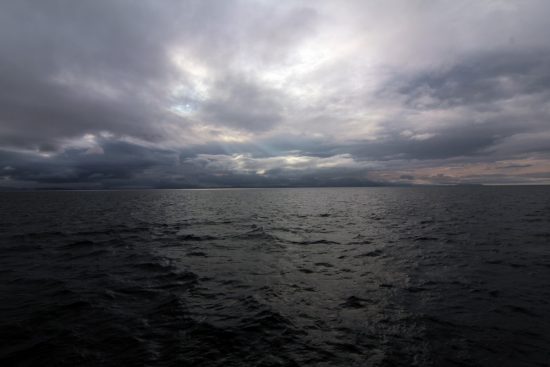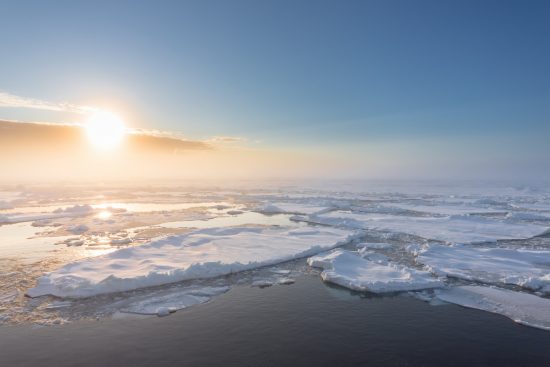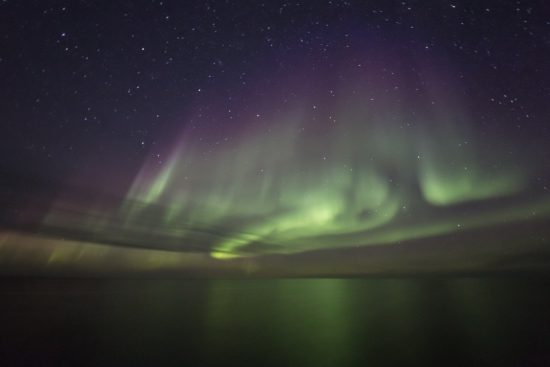




During the last glacial period, the ice in the Antarctic was thicker and extended farther offshore than it does today.
It has been speculated that subglacial lakes had existed beneath it, and researchers have successfully sampled the metre-thick sediment layers left behind by these lakes.
A paper outlining the outcome of this study was recently published in the Nature Communications journal.
Hundreds of subglacial lakes can be found beneath the Antarctic Ice Sheet, with Lake Vostok being the largest.
It is challenging to explore these lake systems, which have remained enclosed for thousands of years. Scientists have to follow strict environmental restrictions so as to avoid polluting the lakes. To date, Russian researchers have only collected samples by drilling into the surface ice of Lake Vostok and testing the water that poured out of the borehole before promptly refreezing.
Now, researchers have recently found unequivocal evidence of a former subglacial lake on the Antarctic continental shelf.
Led by lead author and marine geologist Dr Gerhard Kuhn from the Alfred Wegener Institute, Helmholtz Centre for Polar and Marine Research (AWI), the team based their findings on the evidence provided by pore water analysis.
During expeditions in the Amundsen Sea on the icebreaker Polarstern in 2006 and 2010, sediment cores were collected from valleys on the seabed situated under the Antarctic Ice Sheet.
“The cores, which are up to ten metres long, were collected at a water depth of 750 metres. The lake sediments are currently buried under a four-metre thick layer of marine sediment on the seafloor,” said Dr Kuhn.
“We have now verified that, during the last glacial period, there were also subglacial lakes under a massively thick ice sheet in Pine Island Bay in the southern Amundsen Sea. The ice there has now dramatically retreated, which allowed us to sample palaeo-lake sediments from aboard Polarstern,” he continued.
Co-author and AWI geochemist Dr Sabine Kasten said that there was extremely low chloride content in the pore water measured in the lower parts of some sediment cores, and that this was a clear sign of freshwater, which originates from lakes under the ice.
“We modelled the exchange of freshwater in the porous spaces of the sediment with the overlying seawater, to help us reconstruct the dynamics of the transition from a lake to a marine environment,” said Dr José Mogollón from the University of Utrecht.
The sediments provide an archive of changing environmental conditions in the Antarctic, covering the span of time from the present to the Last Glacial Maximum (ca. 21,000 years ago), when the global sea level was about 130 metres lower than it is today.
These sediments contain components that are unable to be dated, thus narrowing the scientists’ ability to estimate their age.
“We do know, however, that roughly 11,000 years ago Pine Island Glacier retreated and thinned, causing the moving ice to float on the ocean as an ice shelf. As a result, the lakes that were previously covered by glaciers disappeared into the ocean, when it flooded the Antarctic continental shelf. Only the imprint of the lakes in the form of deep basins and sediments remained preserved, which we have now investigated,” said Dr Claus-Dieter Hillenbrand from the British Antarctic Survey.
Satellite monitoring shows that the movement of water from one lake to another can cause glaciers draining the Antarctic Ice Sheet to move faster.
According to Kuhn, “This aspect needs to be taken into account in models designed to make predictions on the future behaviour and dynamics of ice masses, and with them, the degree to which the sea level will rise.”
“We have every reason to believe that there are more subglacial lakes in the Antarctic – and more so in the last glacial period – than has been previously assumed. In addition, icecaps like those on the sub-Antarctic island South Georgia and ice sheets reacted much more sensitively and rapidly to climate changes than previously assumed,” he added.
These studies were made possible by a collaboration between the AWI and fellow researchers from BAS, University of Utrecht, Lamont-Doherty Earth Observatory of Columbia University (USA), and the Universities of Bremen and Leipzig.
For further Information see here
 Herbert
Herbert 4th July 2017
4th July 2017